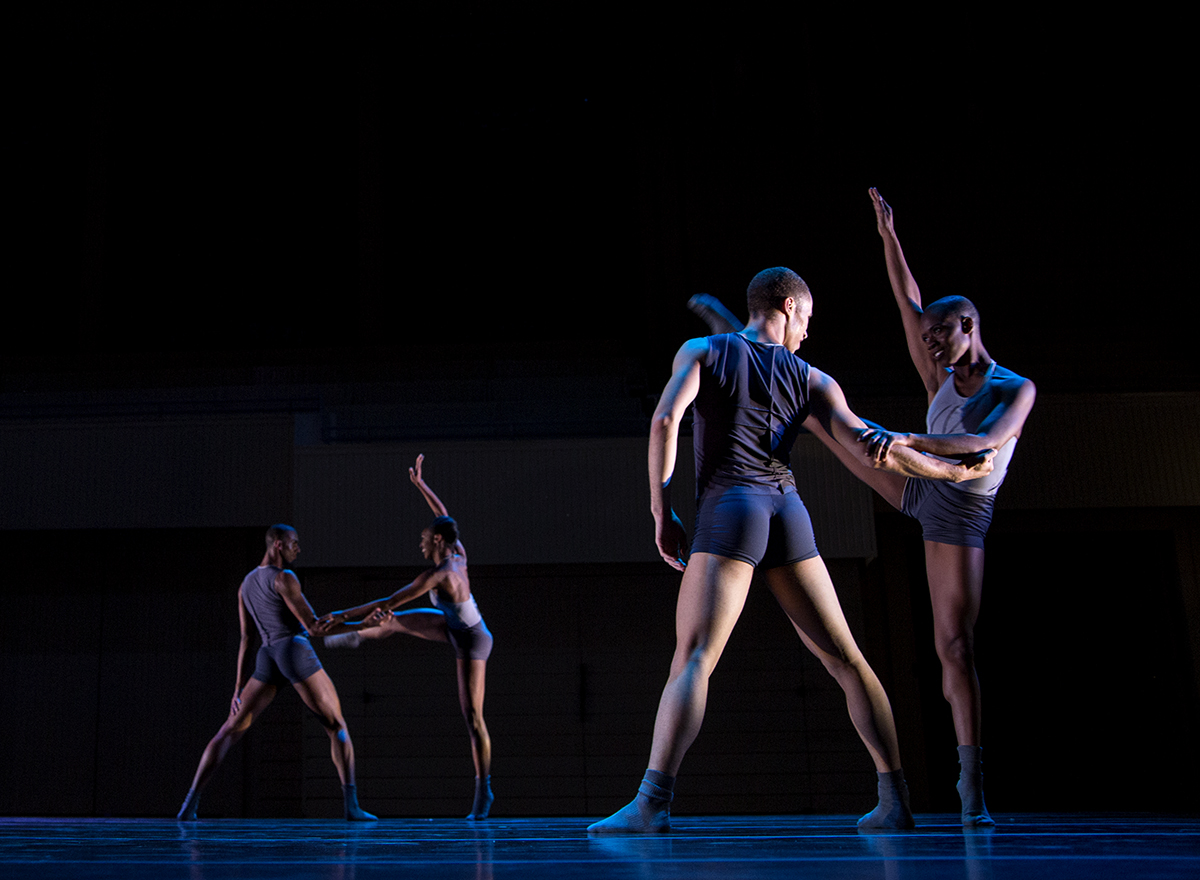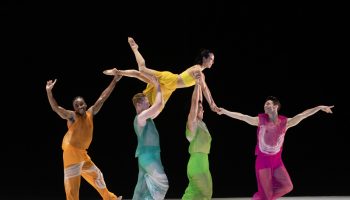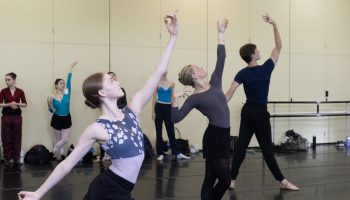The third act audience returned from intermission with blankets, hats and hoods to meet Monday’s evening chill, though soon enough wraps became an afterthought. Could the first performance on a new stage large enough to hold 12 dancers in a straight line have been better selected?
This was Ailey II, the young company that carries an idea from 1960, created by the late dance leader Alvin Ailey — and at the same time presents new works from the here and now.
Choreographer, director and dancer, Ailey began a company for ideas as much as for movement in 1958, and by 1960 he had created a masterpiece called “Revelations” in New York’s 51st Street YMCA. With “Revelations,” he declared a beginning of something new and bold, the signature for a time that called out from the Nashville sit-ins for vision and principled authority.
By 1962, Ailey was touring the world as a part of President John F. Kennedy’s global cultural initiatives. Ailey’s revelation was that the life inside of movement celebrates the seasons of the street and of faith, of being down and being lifted up. And while unfolding the character of African-American tradition, his company was interracial. Its witness was held by no silo of culture, race or shape. Soon enough, “Revelations” touched everyone who came under its spell, and the dance that is itself a movement continues to reach out. Ailey died in 1989.
Daily staff writer Ryan Lindsay presented the context of the Ailey cultural contribution in her June 26 preview story, noting that Ailey was born in 1931, “a time colored by racial segregation and stark violence against African Americans, including the extrajudicial form of terrorism, lynching.” From this horror, Ailey saw the pain and the panache of a strong people and changed the structure of so-called modern dance. He turned it toward the people. He added to the dance lexicon a jazzy interpretation from real life.
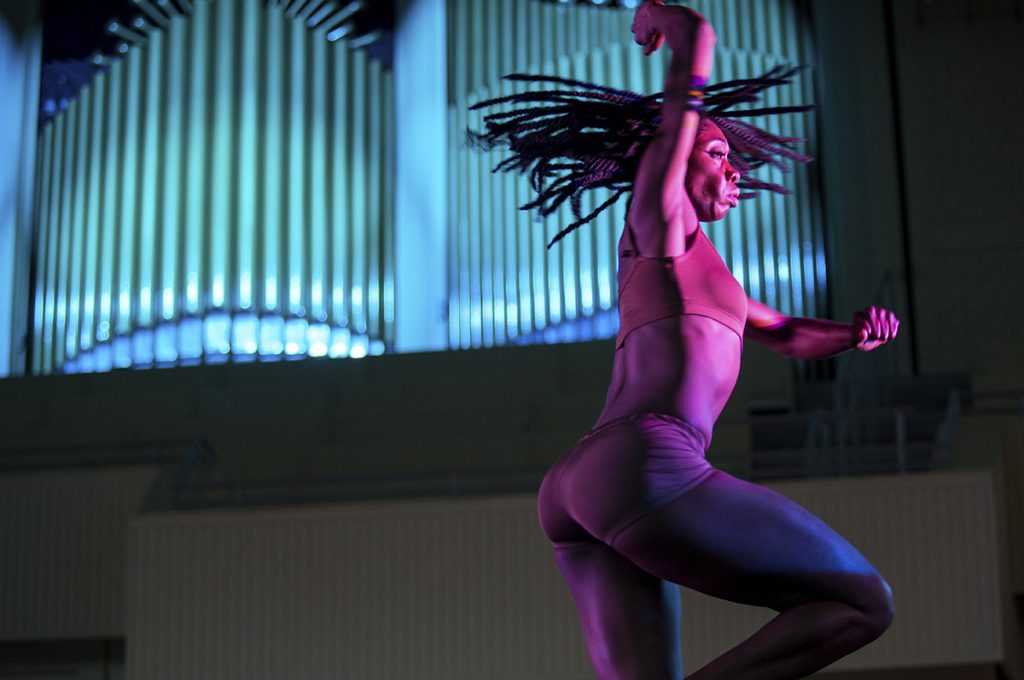
The Ailey signature is a long line from leg to end of arm, a strong chest and a proud butt. This young company has it all, filled with the high stride of spirit called élan. It feels like new Institution President Michael E. Hill and his team had considered timing with Ailey II. For the company so excels in the new Amphitheater, out of doors, and it plants a flag of example, staying on here in residence this week to join the community, teach, share and represent the Ailey vision. It rounds out performance and works to create that other form for movement, namely a culture through which one might name and know the needs of our time.
“Revelations” begins with noble sorrow. The first of three sections is called “Pilgrim of Sorrow,” and its structure holds a prayerful anchor in the subtle image of The Crucified, emerging from within a choir of pain, scorned and ’buked. Buffeted by the travails of life lived hard, a long reach down to rise up a friend is a visual icon not easy to forget — as the musical accompaniment remembers that the Lord delivered Daniel. The music of “Revelations” is grown from the African-American gospel.
A procession with white flags, streamers on long poles and handheld sacred cloth announces a second theme: “Take Me to the Water.” This is The River, a place for blessings and cleansing. The company’s ace male dancer, Jacoby Pruitt, prepares for a sanctified death with magnified restraint, grounding tight-bodied floor movements. The zest of Ailey II contains a serious ethic.
The third movement is heaven-bound, “Move, Members, Move,” and each of the 12 company members move a shared language, together advancing like frames in a film, together and then with signature singularity: working with others and alone with beautiful eccentricities — the women, for example, creating a fan dance to mock or taunt or recognize each other in the bordello, next visited by men who receive saucy wags and flirtations.
Finally, temperance of a lively sort rests in the bosom of Abraham, and quickly the audience joins the beat of shoulder shrugs and high-stepping with a hand jive of its own, dancers pointing skyward. The dance ends, but the audience won’t let them go. So dancers’ bows become a mini encore and each dancer pairs with another for lively characterizations, yet still precious few in the audience make a move to leave.
The senior Ailey company is touring Europe this summer. Let them be. This young company of 12 disciples holds its own; Ailey II gives nothing away, carries no second fiddle, even in the sightlines of such as “Revelations,” a masterpiece of aesthetic, spiritual and social significance.
The evening began with two other works. Company artistic director Troy Powell maintains an Ailey practice to work with colleagues, choreographers and companies. Powell selected for presentation at Chautauqua a piece by Jean Emile, a dance teacher and choreographer working in Barcelona. His dance, called “In and Out, ” seemed a homage to Ailey, asserting the long line and strong chest.
“In and Out” begins and ends with a dancer crouched, sometimes like a long-legged holy scorpion, to draw with her finger an outline upon the stage, perhaps a summary of the dance. The exposition in six movements is about self and other, single and paired or in ensemble — in and out, seeing and being seen, holding and being held, alone and together.
Thus, the call when presenting or aiding presentation is in the extreme, being at one’s best, taking to the limits what the body can do: the perfect pose or a coupling that had not been seen nor understood before. It is a captivating work that sets down the challenge.
“Something Tangible,” the second work, was similarly philosophical. Choreographed by Ray Mercer, winner of the Joffrey Ballet Choreographers of Color award, he now is performing on Broadway in The Lion King, while working on a commission from the Smithsonian Institution, that sister ship to Chautauqua.
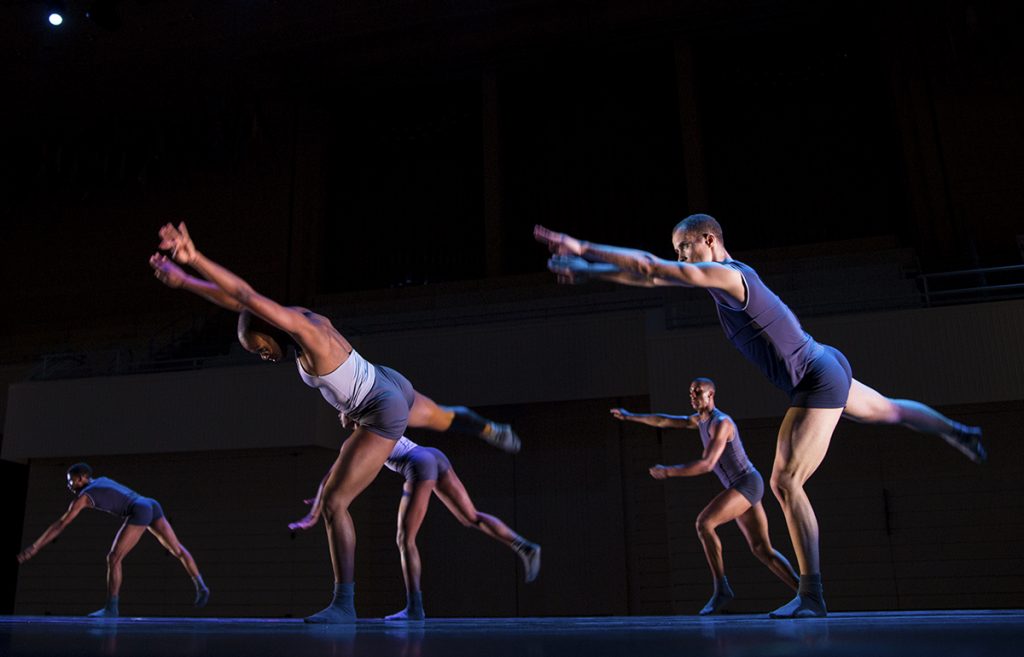
“Something Tangible” aptly is held together by a common gesture — a touch, as if passing a spark of life. The music at first is electronic, filled with synthetic tropes, but it turns at the end to strings and piano. There are whirls and complex stepovers, bodies sometimes as if machines which have capacity to occasion flight. It is electric. Sparks fly, until it is discovered just how conditional it is out there where balance becomes an issue.
This is thoughtful, provocative and finely rendered.
It was a night of beginnings.
(P.S.: A Report on The Dog: I have listened for years to a dog who wanders just outside the Amp, and Dog was heard again Monday, early in the performance, with two strong barks. In a breakthrough moment, Dog for the first time caught attention from the stage, as a dancer streaking across the stage cast a look beyond the audience toward Dog and smiled.)
Anthony Bannon is executive director of the Burchfield Penney Art Center, a multi-arts collecting institution on the campus of SUNY Buffalo State. Long ago, but not far away, he was the dance and theater critic at The Buffalo News, a student of Selma Jeanne Cohen and Doris Hering.


